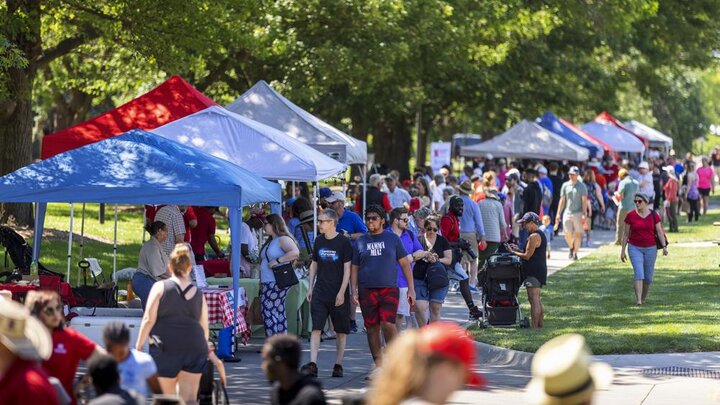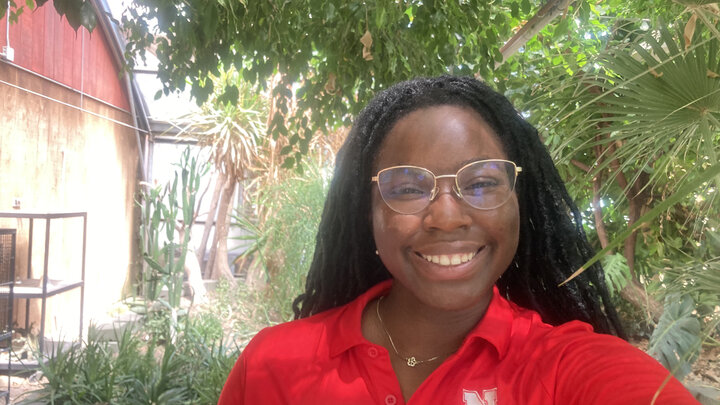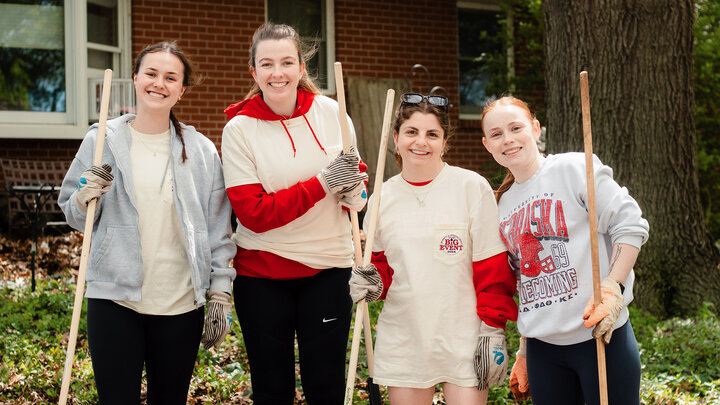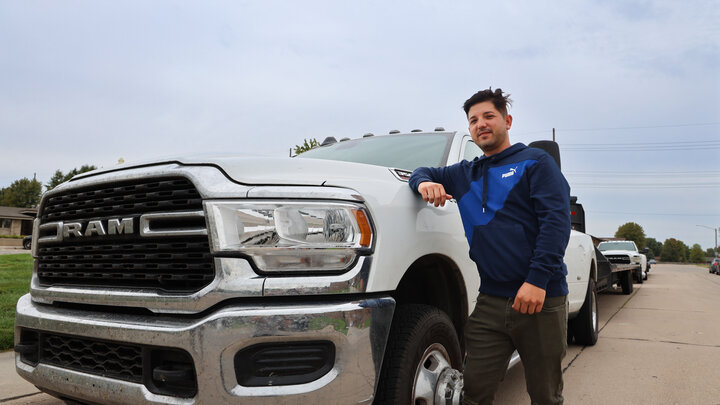This summer, in nearly 100 communities across Nebraska, vendors are selling fresh produce, baked goods, handmade crafts, clothing and more at local farmers markets. To make fresh goods and produce even more accessible, this year two rural Nebraska farmers markets are qualified to accept SNAP benefits.
Created by the U.S. Department of Agriculture, the Supplemental Nutrition Assistance Program helps individuals and families purchase nutritious foods on a budget, the goal being better health and more self-sufficiency. For the Kearney Area Farmers Market and the Seward Farmer’s Market on the Square, they see SNAP as a boon to their community members.
“SNAP brings those who are on the program to the market to be able to buy fresh and local and support those vendors,” said Clarissa Feldman, treasurer for the Kearney market. “And vice versa. Those vendors are able to support them.”
“There’s not a shortage of food around here,” said Carol Albrecht, manager of the Seward market. “There’s just some people who don’t have it. SNAP could make it easier for people that don’t have access to fresh produce.”
While implementing SNAP varies from market to market — Seward uses tokens; Kearney uses a debit-card-like system — the benefits are the same, said Margaret Milligan, program coordinator for Buy Fresh Buy Local within the University of Nebraska–Lincoln’s Department of Agricultural Economics, who also works with Nebraska Extension on farmers market promotion.
“There’s a lot of people using SNAP in Nebraska,” she said. “If you offer an opportunity for people to use their SNAP benefits, more people will come to the market. The farmers are still receiving the same amount of income. It’s just expanding their customer base.”
Creating that opportunity is exactly how extension educators like Milligan help communities’ markets. The process of filing SNAP applications, and going through the training, can be daunting, said Jason Pawlenty, a Food, Nutrition and Health specialist who helped Seward with its SNAP application. The USDA asks farmers markets accepting SNAP benefits to provide estimates on customer numbers, percentages of foods that are SNAP eligible, food vendors versus non-food vendors and more. But that is where Milligan and other educators come in, helping communities navigate the red tape.
“We provide assistance and support for farmers markets that are trying to become more accessible for people in rural communities,” she said, “like getting SNAP, like training on inclusive ways to include Spanish-speaking people, who have traditionally been left out of farmers markets in Nebraska.”
This is Kearney’s second year using SNAP, and Feldman said the benefits have already proved worth the process of becoming certified.
“Last year, we did over $3,000 more because of the program,” she said. “Those vendors who benefit from the program would have not seen as good as sales typically.”
In addition to SNAP benefits, both Kearney and Seward offer Double-up Food Bucks, a program run by the Institute of Agriculture and Natural Resources’ Nerbaska Regional Food Systems Initiative (NERFSI). For every SNAP dollar used by customers, they receive a free Double-up Food Buck, up to $20. While SNAP funds can be used to purchase most groceries, Double-up Food Bucks can only purchase produce. However, Milligan points out, that translates to free, fresh fruits and vegetables every market.
“It’s a huge win,” she said.
For those involved in the markets, the bottom line is nice, but there is more to it than that. Farmers markets are a place of community creation, Albrecht said.
“It’s a good place for people to congregate, get together, to socialize,” she said. “Some of the older people come down, and they watched my kids grow up at the market.”
Candi Benge, the former treasurer who helped Kearney become SNAP certified, agreed.
“The part that stands out for me is the community-building and the relationship,” she said. “When you get to look in the face the person who produced your food, it takes the retail feel out of it, and it’s more of a neighborly feel.”
Now that more markets are accepting SNAP and offering Double-up Food Bucks, Milligan predicts that that neighborly connection will only increase throughout Nebraska.
“They say that, on average, you have 15 to 20 social interactions at a farmers market, as opposed to a grocery store, where you have maybe one or two,” she said. “So you can find really good food there, but also, you can find connection.”
The Seward Farmer’s Market on the Square is open 5 to 7 p.m. Wednesdays and 8 a.m. to noon Saturdays at Courthouse Square, 529 Seward St.
The Kearney Area Farmers Market is open 8 a.m. to 1 p.m. Saturdays at the Hilltop Mall, 4915 Second Ave. Beginning June 1, the market will also be open 2 to 6 p.m. Wednesdays.




